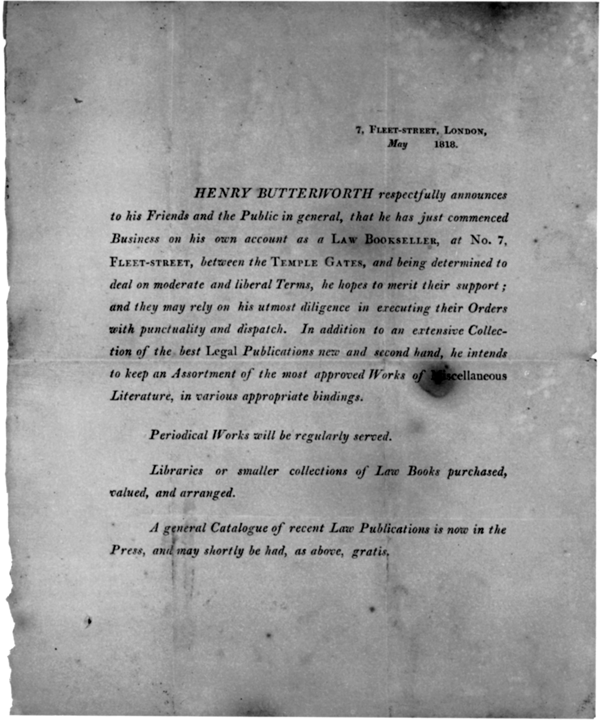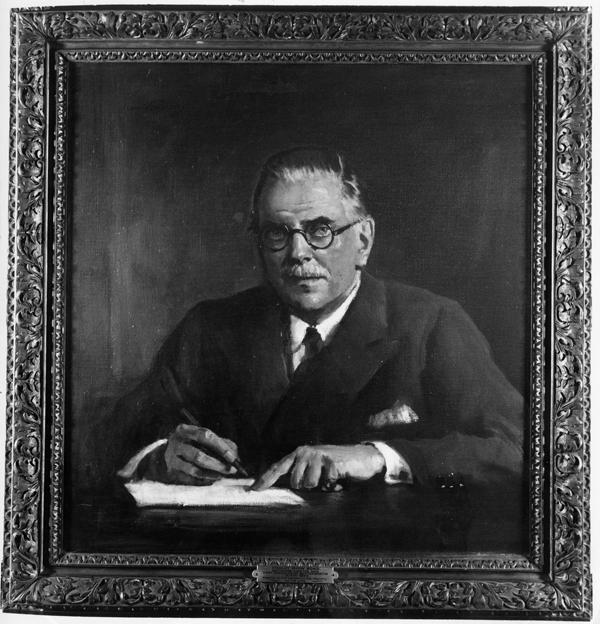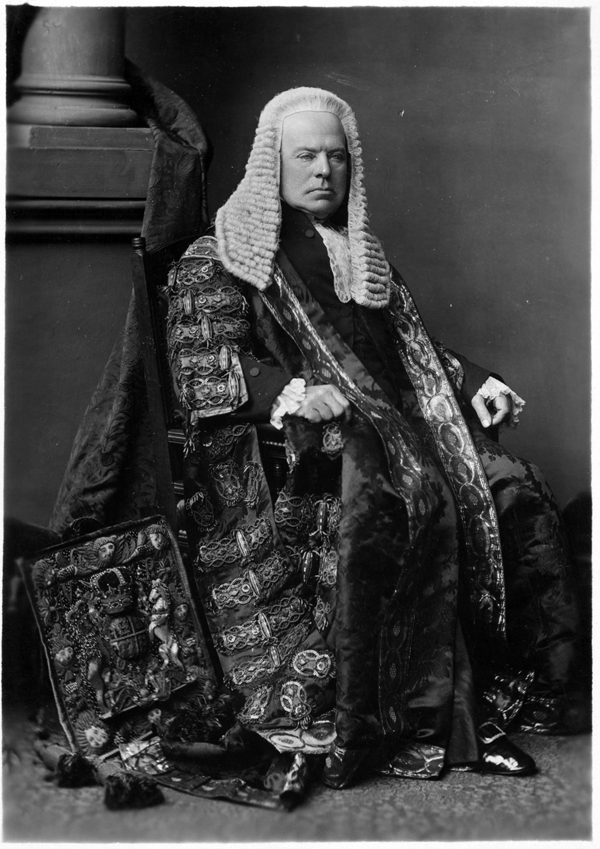LEXISNEXIS: A BICENTENARY
In 2018 LexisNexis celebrated its bicentenary. Over the last 200 years, the company has seen great change in the legal publishing industry and undergone several transformations, but the central aim has always been based around advancing the rule of law. Innovation and outstanding customer experience have always been at the heart of the business and, while LexisNexis is recognised as one of the world's leading legal publishing and technology companies (with a database 150 times larger than Wikipedia), its origins are far humbler.
HENRY BUTTERWORTH
Just three years after the Battle of Waterloo on 25th February 1818, a 32-year-old Henry Butterworth founded what would become the renowned legal publisher, Butterworths, at 7 Fleet Street. The Fleet Street premises Henry chose had a long history of legal publishing dating back to the reign of Edward VI - Richard Totel published ‘at the sign of the Hand and Star’ at the address from 1553 and was soon firmly established as a law publisher during the latter part of the sixteenth century.
Henry had started in London's legal world as a 15-year-old apprentice in his uncle's law publishing business in December 1801. He had worked diligently, hoping for a partnership in the firm, but, when this was not forthcoming, he was ambitious enough to start up on his own, setting up a bank account with Hoare's Bank which operated for the next 160 years.
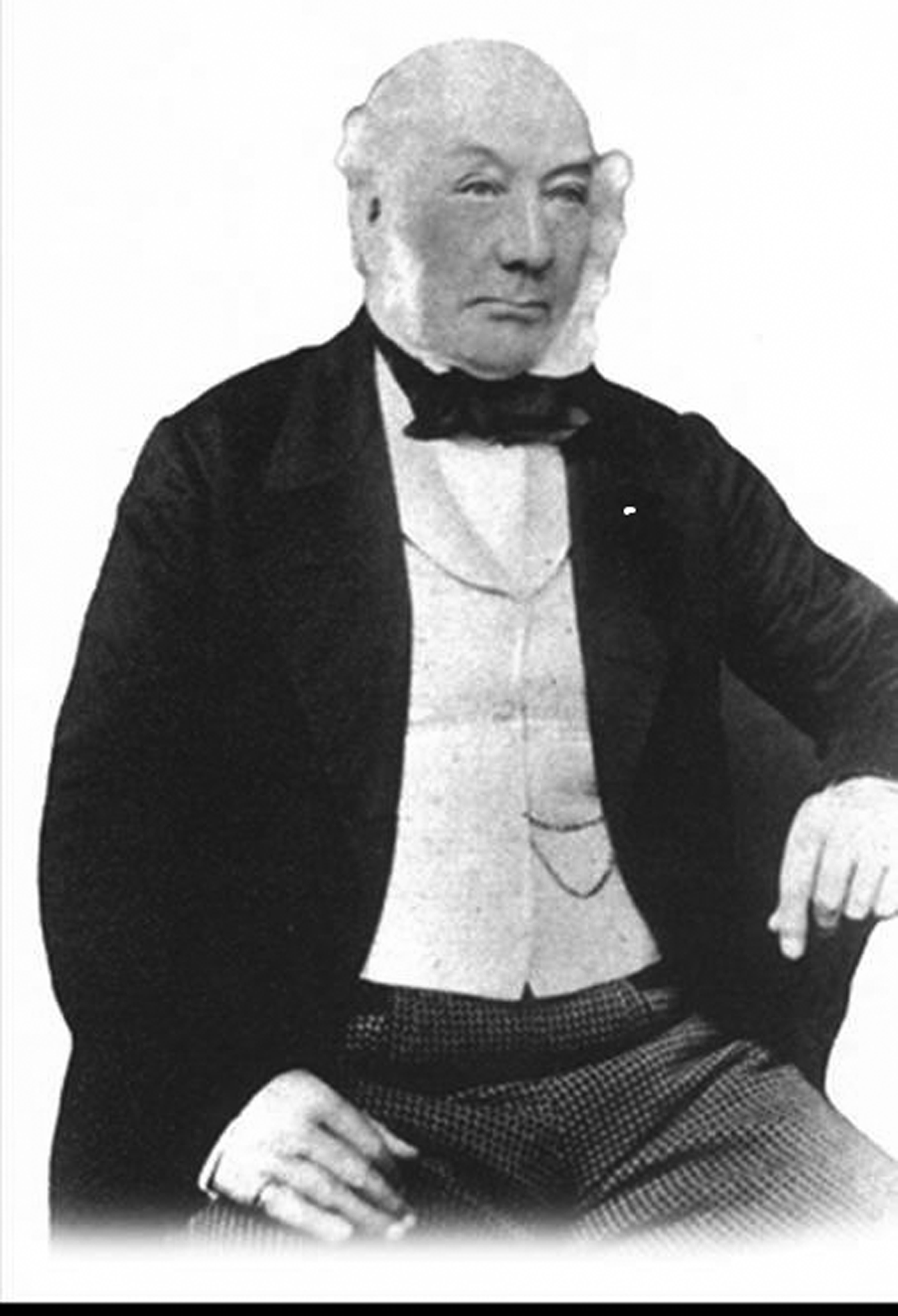
Figure 1: Henry Butterworth, 1818.
Henry spent his first few months of business building up his stock and, by May 1818, issued his first prospectus to customers. Henry sold his own publications as well as books and reports from other publishing houses – including his uncle's. The earliest Butterworth catalogue to survive is ‘A Catalogue of Law Books in General Use of the Best Editions; Intended as a Guide to Purchasers of Legal Works’ which appeared in 1820. By the third edition, the catalogue had expanded from 130 pages to 208.
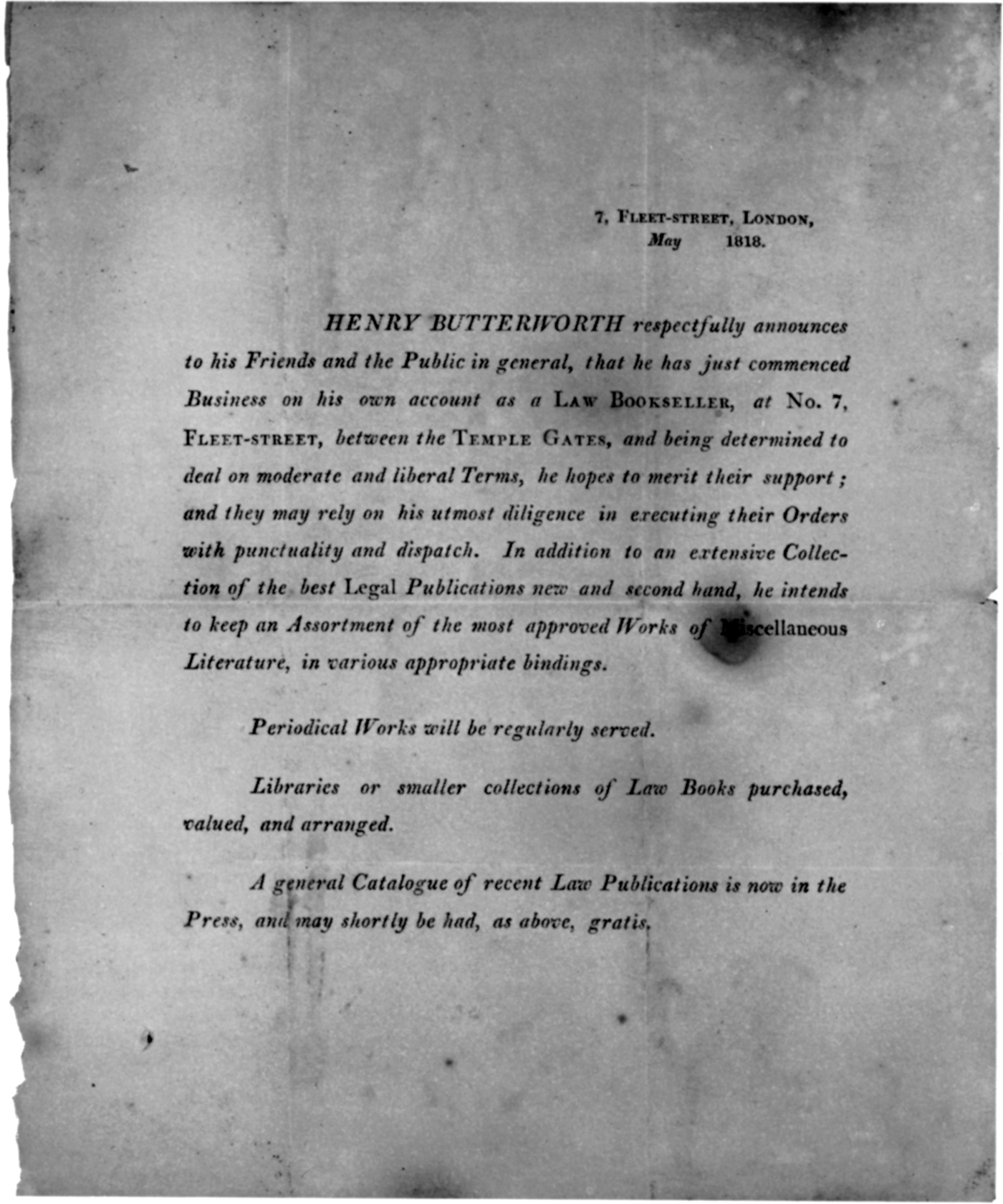
Figure 2: Henry Butterworth's opening letter, 1818.
Some of the publications first commissioned by Henry are still published today. These include Stone's Justices' Manual, which was first published in 1842 priced at 5s and 6d. Originally a slim pocket-sized volume intended to provide brief guidance for magistrates on applicable sentences for various offences, it has now reached its 150th edition and provides comprehensive coverage of all existing, new and amended legislation and hundreds of new cases that set precedents or clarify specific principles of law.
BUTTERWORTHS
In 1845, Butterworths was granted the right to publish the second edition of Erskine May's Parliamentary Practice, and it retains this licence today. This eponymous guide to parliamentary practice and procedure provided accurate and detailed information on the constituent parts of Parliament, their powers and jurisdictions, membership of both Houses, financial procedure and the process of debate. It is now in its 24th edition and each edition has been edited by May's successors in the office of Clerk of the House of Commons. The publication has evolved to include detail of more modern developments such as ‘The impact on procedural and practical issues of the formation of a Coalition Government’ and ‘Significant changes to Members' expenses which affect Parliament’.
In 1852, Butterworths became ‘Law Booksellers and Publishers to the Queen's Most Excellent Majesty’ and in 1854, Henry Butterworth's interest in the Elizabethan age and the history of his business premises led him to adopt the Hand and Star as Butterworth's colophon, before it was eventually adopted as the company's trademark in 1898.
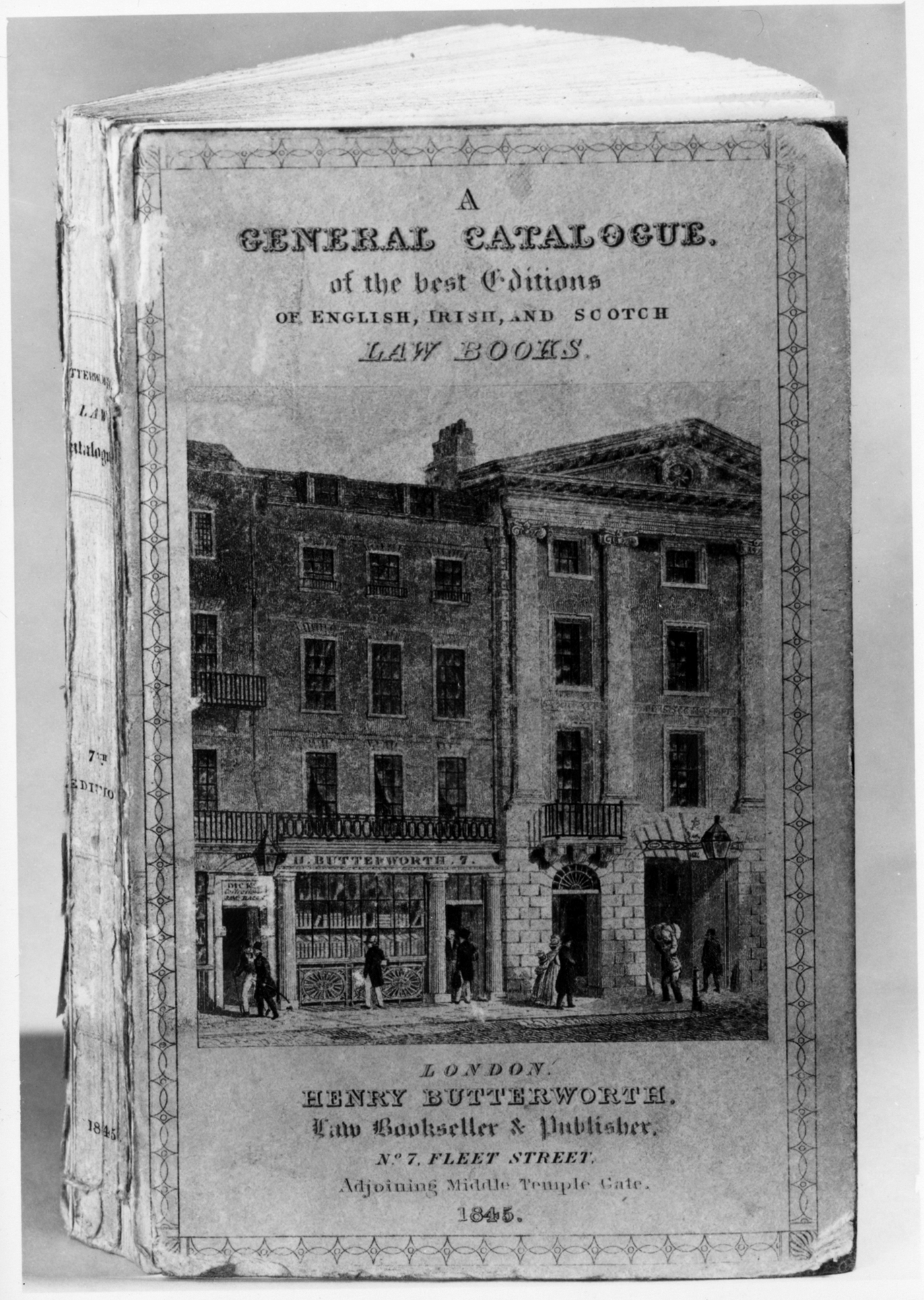
Figure 3: A General Catalogue, 1845.
Henry Butterworth died on 2nd October 1860 aged 74 and was succeeded by his 43-year-old son Joshua Butterworth. Joshua initiated new publications such as Tristram and Coote's Probate Practice. First published in 1873, it is now in its 31st edition and has been kept updated by new editions and supplements to meet the changing needs of today's practitioner, as well as featuring in the online practical guidance tool Lexis®PSL.
In the same year, Joshua was also responsible for the publication of Kelly's Draftsman which is now in its 21st edition and known as Kelly's Legal Precedents. This unrivalled practical research and drafting text still provides a unique collection of the main forms and precedents practitioners are likely to need in their day-to-day practice.
In 1894, Joshua Butterworth became master of the Stationers’ Company and presented the great Caxton Window (displaying Edward IV and his Queen, Elizabeth Woodville, being shown a proof by William Caxton) which still forms an impressive feature of the north wall of Stationers’ Hall, in the shadow of St Paul's Cathedral. The following year, he died at the age of 77 without an heir. The Shaw family – a publishing business with its roots in Fetter Lane dating back to 1750, and which was controlled by another family, the Bonds – acquired Butterworths and its list of 21 books for £5,500.
By 1896, Queen Victoria's Royal Warrant was issued to the new owners of Butterworths and in 1899, the company moved from 7 Fleet Street to premises in Bell Yard. This was the first in a succession of offices in Bell Yard which became the company's headquarters in 1952. A wooden beam which formed part of the structure of 7 Fleet Street survives to this day and is in the boardroom at LexisNexis's London office.
THE STANLEY BOND ERA
Stanley Bond joined Butterworths at the time of the takeover aged 18 on a salary of £40 a year. In 1928 he wrote: ‘my father put me into Butterworths as, owing to illness, the idea was that I should have a quiet and easy life. But things happened otherwise.’ Stanley was to make a unique contribution to legal literature with the great encyclopedias which remain the indispensable works of reference wherever English law is practiced: the Encyclopedia of Forms and Precedents, Halsbury's Laws of England, the English and Empire Digest and Halsbury's Statutes.
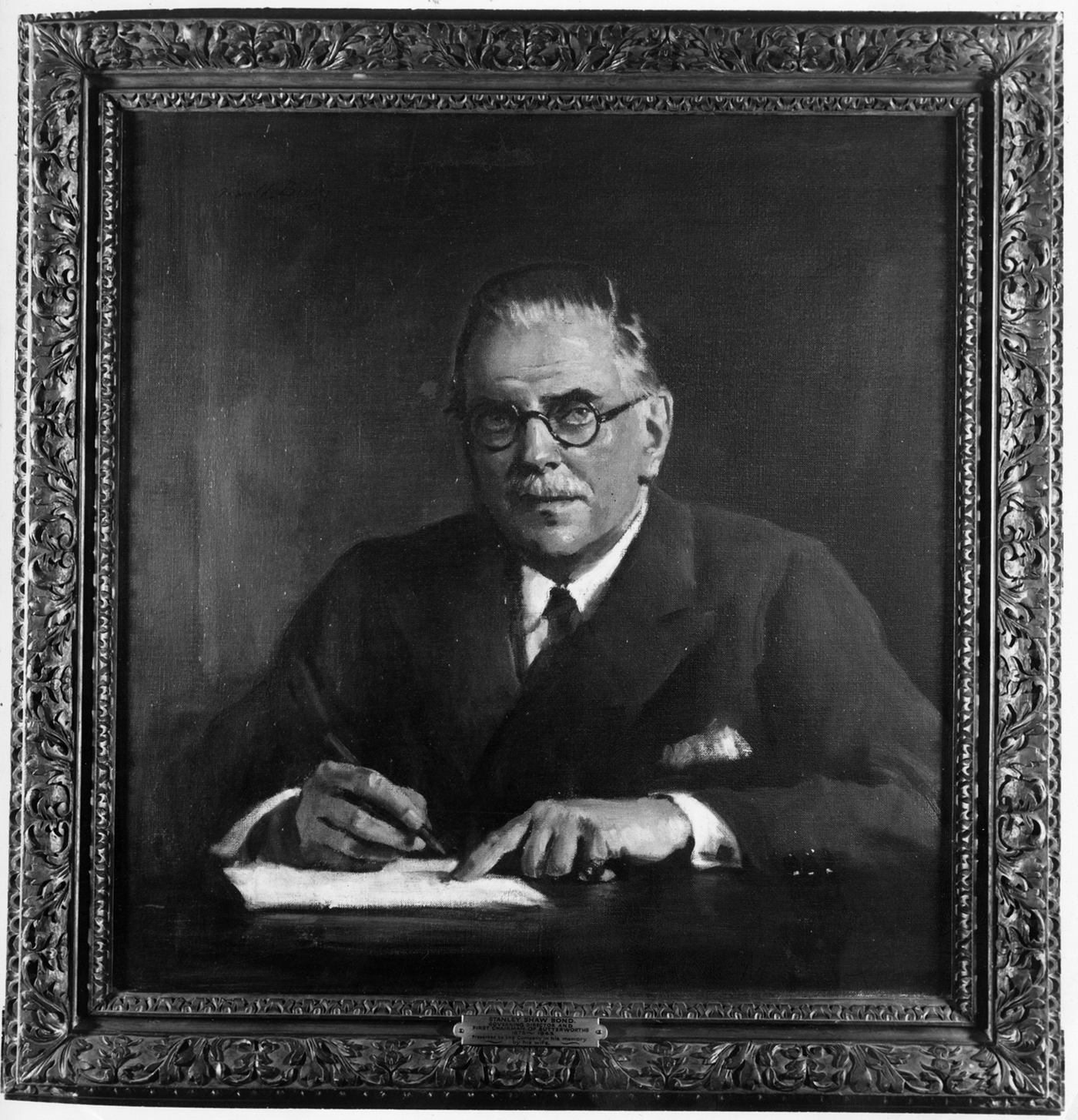
Figure 4: Stanley Bond.
Over the next fifteen years, Stanley assumed control of the firm from his father Charles. Stanley's influence over the business was profound. In 1945, Chancery Barrister J M Lightwood said of him: ‘…though he was not the founder of Butterworths, it was by his foresight, energy and capacity that it secured a position of special prominence among law publishers…He was not in the law, but he was nearer to the heart of it than most practicing lawyers. Only so could he have realised what sort of publications they really wanted. He supplied the profession with a set of conveyancing precedents, with a statement of the whole of the law of England, and with a digest of the cases on which that law is very largely based. None of these publications was the first of its kind. There had long been precedents for the use of conveyancers; there had also long been digests of cases and there had been statements of the whole law which were widely used and appreciated by lawyers. But Bond had a vision of something still more complete and still more useful in each of these three classes…’
Lightwood refers to the Encyclopedia of Forms and Precedents (EF&P), which provides a complete library of legal forms and precedents. Stanley published the first volume in 1902 after seven years of work and, after a month, had secured the sale of 1,500 sets of 20 volumes at 18 shillings each. Today, available in hard copy and online, EF&P still offers an unrivalled collection of non-litigation precedents for everything specialist and generalist practitioners are likely to encounter. Written by experts in modern, clear language, it covers English and Welsh law and includes all the main practice areas.
Stanley revolutionised legal publishing with direct sales techniques to his customers and a marketing vision which transformed Butterworths from a minor national publisher to a leading global legal publishing house. Stanley closely controlled the Butterworths brand by co-ordinating teams of direct salesmen who travelled the length and breadth of the Empire visiting lawyers as ‘Mr Butterworth’.
Despite having no business experience outside Butterworths, Stanley ensured his sales teams were tutored in effective sales techniques for the company's publications and created detailed instruction manuals for their use. In the late 1930s, Butterworths used gramophone recordings to send motivational messages to the sales teams and customers, and the creation of a showroom in Bell Yard meant that lawyers visited London from all over the world to view the complete range of publications.
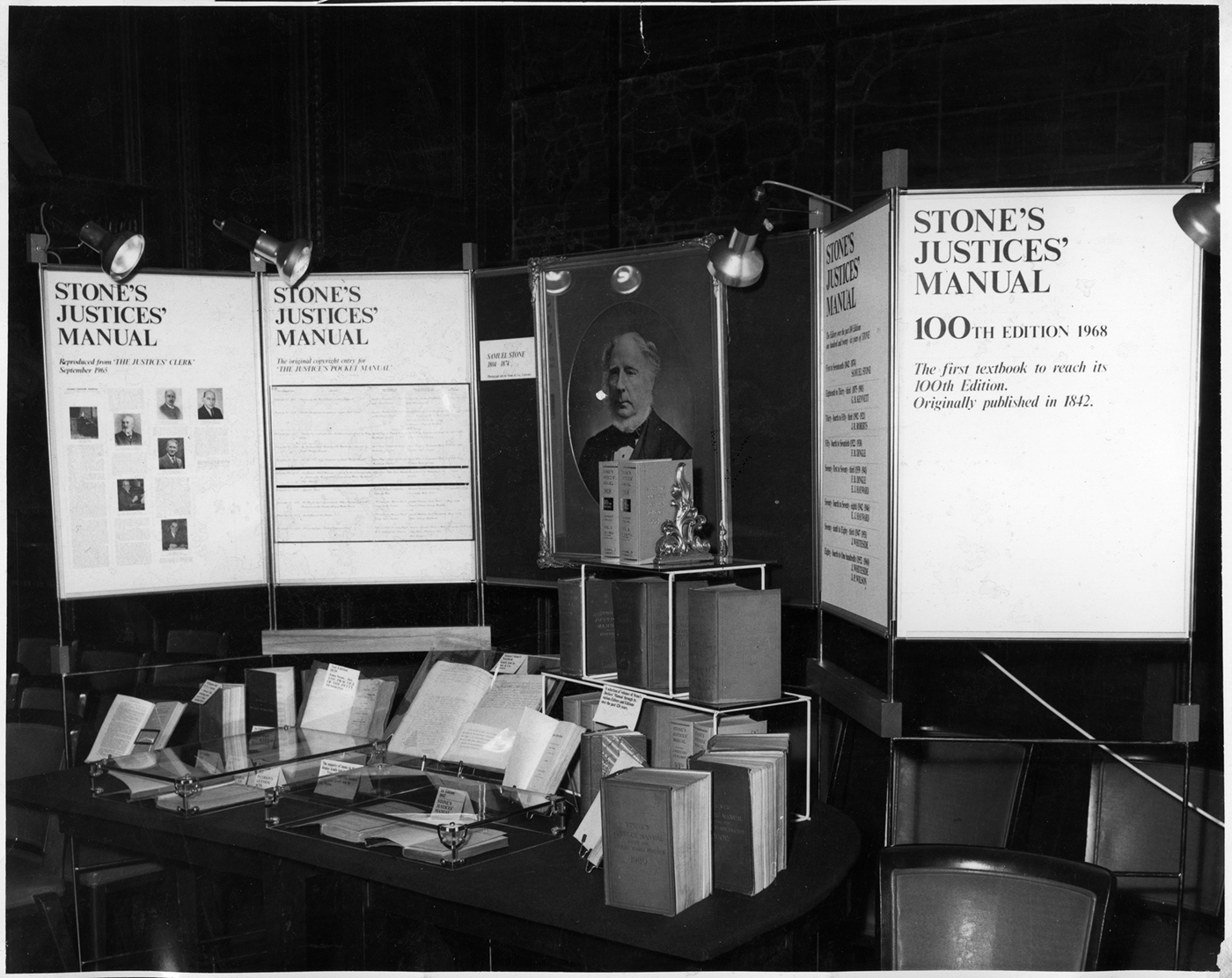
Figure 5: Stone's Justices Manual.
Maurice Maxwell, director and Chairman of Sweet and Maxwell, a Butterworths competitor wrote: “Stanley Shaw Bond introduced professionalism into law publishing, and it took the other law publishers nearly half a century to catch up with him in this respect.”
Former Butterworths staff member Mr Ron Watson said: “Stanley Bond had a brilliant idea; an idea perfectly suited to the needs of lawyers and perfectly in tune with his system of organisation and method. He realised that lawyers worked by precedent and books were the fundamental tools of their trade, especially books of reference and publications which would keep their law up to date. Then came the second brilliant idea. Each subscriber must undertake to subscribe to all supplements ‘as published’. He receives this literature automatically, with an invoice: the Butterworths ‘Catch 22’. It was almost the perfect publishing ploy.”
HALSBURY'S LAW OF ENGLAND
After three years of development work, Butterworths launched Halsbury's Law of England in November 1907. Designed to help legal practitioners and researchers answer the full range of questions likely to arise, the work took ten years to complete. When Stanley initially approached Lord Halsbury to be the Editor-in-Chief, the former Lord Chancellor appeared interested but would not commit. Keen to chase up a response, Stanley was shocked to find that Lord Halsbury had gone on holiday to Nice and said: “As I needed to start as soon as possible, I took myself to Nice and finally ran Lord Halsbury to earth in a hotel. I accosted him in the foyer and in surprised tones he said, “Hello Bond, what are you doing here?” I replied, “I've come for my answer my Lord.” “But I'm on holiday,” Halsbury replied. “I'm sorry my Lord, but I must have a reply one way or the other.” “Well Bond,” he said, “I admire you for your cheek…and yes I'll do it. Only, Bond, the labourer is worthy of his hire…eh?” “Name your fee, my Lord,” I replied. He named it and it was a stiff one. I pulled out my cheque book and wrote him a cheque for the lot. “Done my Lord,” I said.’
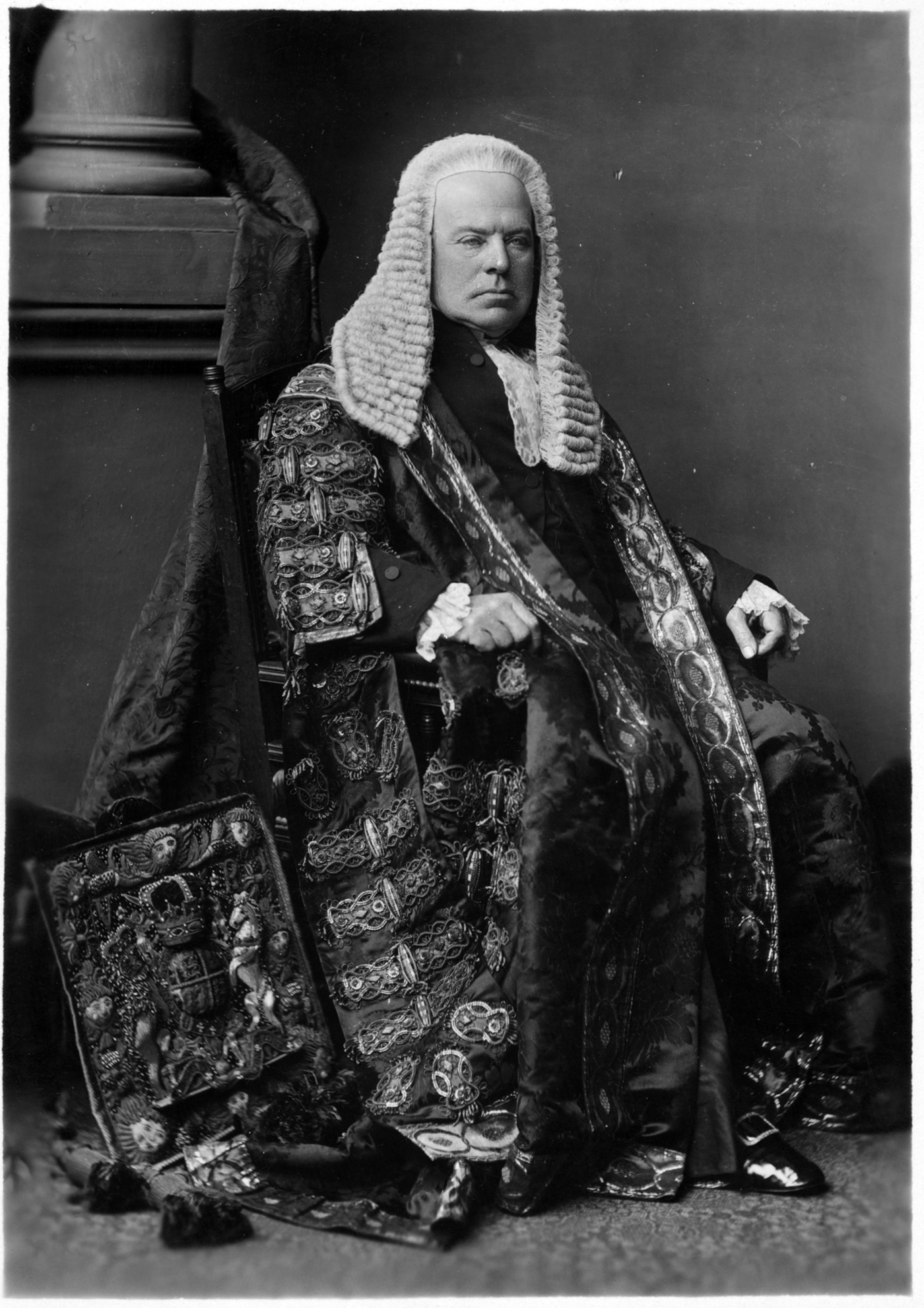
Figure 6: Lord Halsbury.
Halsbury's Laws was a printed document of 76 pages with manuscript additions and Butterworths prepared a 63-page Representatives Manual in 1910 which outlined the selling points for the publication. In 1912, a special ‘India Paper Edition’ of Halsbury's Laws was issued and advertised as ‘occupying twenty-six inches of shelf-space and suitable to be used on a train’. Since then each subsequent edition of Halsbury's Laws has been dedicated to the reigning monarch.
By 1910, when Charles Bond retired and Stanley assumed full control of Butterworths, Stanley was well on his way to achieving his ambition of building a complete and coherent system of legal research and was taking ambitious steps to change Butterworths from an English publishing house to an international one, with the launch of sales offices in Australia in 1911, Canada in 1912 and New Zealand in 1914.
TOLLEY'S
In 1916 another publishing house was founded in Croydon when Charles Tolley published Tolley's Income Tax – his first guide to taxes which revolutionised the industry and still informs how accountants look up tax rates and allowances to the present day. The publication cost one shilling and sold 18,000 copies. Subsequently acquired by Butterworths in July 1996 for over £100million, Tolley still specialises in tax intelligence solutions, highly-regarded exam training and education materials.
THE ENGLISH AND EMPIRE DIGEST
The third of Stanley Bond's encyclopaedias was the largest and least successful. The English and Empire Digest comprised 45 volumes and had been started in 1913 but was delayed by preparations for World War I. In the end, the first volume was published in 1920 and full publication, which noted the most important cases decided throughout the Empire, was completed in 1930. The final product was the first encyclopaedia which used locally recruited overseas contributors, reflecting the enhanced knowledge of overseas markets gained by the Butterworths local office teams.
In 1927, the year in which the BBC was launched by Lord Reith to ‘inform, educate and entertain’, Stanley changed the name of the company to Butterworth and Company (Publishers), remaining the sole shareholder until his death.
HALSBURY'S STATUTES
By 1929, the value of Halsbury's Laws as a reference work was further enhanced when Bond launched a continuation encyclopaedia, Halsbury's Statutes of England. This contained the verbatim text of all the statues of England arranged under the same subject titles as Halsbury's Laws. Still available today as Halsbury's Statues of England and Wales both in print and within the online research tool Lexis® Library, the publication covers statute law of England and Wales from the earliest times to the present day. It provides an up-to-date version of the amended text of every Public General Act and Church of England Measure currently in force, as well as several private and local Acts.
In 1934, Stanley opened a South Africa office and by 1936 his latest innovation had been launched, taking Butterworths into case law reporting. The All England Law Reports was first published as a weekly series in response to complaints from the Bar that the official reports were too slow to be published. Despite hostility from the judiciary, the All England Law Reports became one of Bond's bravest and most successful ventures and not since Halsbury's Laws of England had Stanley devised a greater contribution to legal literature than what came to be called All ER.
Explaining his future publishing plans, Stanley wrote: “To speak quite plainly, the driving power, whereby the business has progressed to its present size, from quite a small beginning, has emanated from me personally – the creative ideas have also come from me. I have an endless number of ideas: they come to me out of the blue.”
ATKIN's COURT FORMS
In 1937, work began on the Encyclopaedia of Court Forms in Civil Proceedings (Atkin's Court Forms) with Lord Atkin as Editor-in-Chief. One of Stanley Bond's last major works it was designed as the natural successor to the Encyclopaedia of Forms and Precedents. Authoritative and comprehensive, Atkin's Court Forms was intended to be very practical in its approach. However, publication was hampered by difficulties in achieving continuity in the Butterworths editorial team during World War II.
Still published today as Atkin's Court Forms, it remains the UK's only encyclopaedia of Civil Litigation Forms, Precedents of Pleadings and Procedure. With over 130 titles, this work provides practitioners with a truly unrivalled collection of the main procedural documents required in every civil proceeding before the courts and judicial tribunals of England and Wales. Contributed to by leading authorities in their field, each title contains expert commentary to guide readers through general and specialist court procedures.
LAW REPORTING COMMITTEE
In 1939 the Lord Chancellor set up the ‘Law Reporting Committee’ to consider the proliferation of law reports and the activities of Butterworths continued apace as the company acquired rivals the Law Journal Reports and the Law Times Reports.
During World War II, the Butterworths staff were evacuated to Stanley Bond's country home – West Dean Park near Chichester, where he had lived since 1935. Although a skeleton staff stayed in London, most of Bond's home was occupied by offices and staff accommodation. Demonstrating the spirit of the times, staff on the Law Journal decided, ‘to form, without delay, a Law Journal Cycling Club, and all the staff who can ride bicycles must secure one at once, and ride that bicycle in fair weather or foul through bombs, if bombs there be, from their homes to the office, and must be punctual on all occasions.’
THE WAR YEARS
Following the Emergency Powers (Defence) Act in 1939, the Butterworths team prepared proposals to publish an Emergency Legislation Service which was a loose-leaf service of orders lightly annotated for the sake of speed. Initially covering 79 emergency orders, regulations and circulars were included in the fortnightly loose-leaf issues which eventually grew to approximately 500 pages over the next twelve years. This illustrated the unrivalled ability of the Butterworths team to produce content responsive the legal market's requirements.
In February 1943, Stanley fell ill with pneumonia and died unexpectedly at the age of 65 at his West Dean Park home. He held a unique position and in his will Stanley ‘expressed a strong desire’ that Butterworths should continue after his death in the way he had run the company. While he had tried to ensure Butterworths was well equipped for the future his unexpected death left his staff stunned and the company vulnerable.
Ron Watson, an experienced publisher explained: “Divide and rule was the technique of Bond's management. He failed in building and organising a structure which could survive him and continue to expand and flourish after he had gone. He left a perfect take-over situation; a situation unable to withstand the ‘corporate’ publishing concept which even then had appeared in the USA and within a few years was to cross the Atlantic and change the face of British publishing.”
The day after his death, the Board of Butterworths met and elected a new Chairman who oversaw the sale of 92,400 shares to Hambros Bank for £231,000. In 1944 the major legal publications accounted for 75% of the company's revenue and an even higher percentage of the company's profits.
HALSBURY'S STATUTORY INSTRUMENTS
The first major legal work post-war was a second edition of Halsbury's Statutes and the Encyclopaedia of Court Forms in Civil Proceedings which was begun in 1937, followed in 1950. A new Halsbury was added in 1951 with Halsbury's Statutory Instruments. Throughout the 1950s and 1960s the legal publishing business prospered, and Butterworths developed its international position with local publishing in Australia, New Zealand, South Africa and Canada.
In the Coronation Year of 1953, Butterworths had moved into new premises at 88 Kingsway and by 1967 the company was one of the largest British publishers, with sales of £3.6million. The management of the time entered merger talks with a range of organisations in an attempt to create the benefits of scale and rationalisation which would defend them against increasing competition from US publishers.
BUTTERWORTHS AT 150
Unfortunately, this resulted in a fierce takeover battle and in the face of public concern about allowing a premier publisher to fall into American hands, Butterworths set about seeking a British ‘white knight’. On Butterworths 150th anniversary, the International Publishing Corporation (IPC) valued the company at £6.8million and was so keen to add to its technical and academic portfolio the firm entered corporate life for the first time in its history. Three years later Reed International acquired IPC.
In the USA of the 1960s while the Vietnam War and Civil Rights Protests dominated the headlines, the Mead Corporation (founded in 1846 and incorporated in 1930) quietly purchased the Data Corporation to acquire its printing technology. The company created a subsidiary called Mead Data Central Inc in 1970 and this division launched the LEXIS service in 1973. By 1975, LEXIS was installed in university law libraries which ensured that future generations of lawyers would embrace Computer-Assisted Legal Research (CALR) services.
NEW LAW JOURNAL
In the UK, the 150 year old Law Journal and the Law Times were amalgamated to form the New Law Journal in 1965 and the 1970s saw an expansion of the academic side of the Butterworths business. The increasing scope and volume of legislation, together with the costs of traditional hot-metal typesetting started to raise questions about the continuing usefulness of the full-bound textbook as a standard format. The Yellow Tax Handbook was the first book in the Butterworths business not to set by the traditional ‘hot-metal’ technique.

Figure 7: West Dean House.
The successful experiments with loose-leaf publishing in tax and statutes were now applied across the Butterworths portfolio and topics requiring frequent revision and updates started to be issued in loose-leaf format.
Harvey's Industrial Relations started as a bound commentary on the Industrial Relations Act of 1971 but then transformed into a four-volume loose-leaf work, updated monthly. Other established works soon followed to meet the explosion of new European legislation and new areas of interest including Environmental Law, Consumer Protection and Product Liability were developed. The Butterworths Family Law Service was published in 1970 to cater to the needs of high street practices.
LEXIS
In 1979, Butterworths decided to enter into an agreement to market the LEXIS system in the UK from its Butterworths (Telepublishing) Division and it launched in 1980 providing lawyers with unparalleled access to libraries of legal information, transforming the scope of legal research for litigators and academics. By 1980, the NEXIS database service was introduced providing The Washington Post, Newsweek, The Economist, US News & World Report, Dun's Review and the Reuters and Associated Press newswires.

Figure 8: LexisNexis Online.
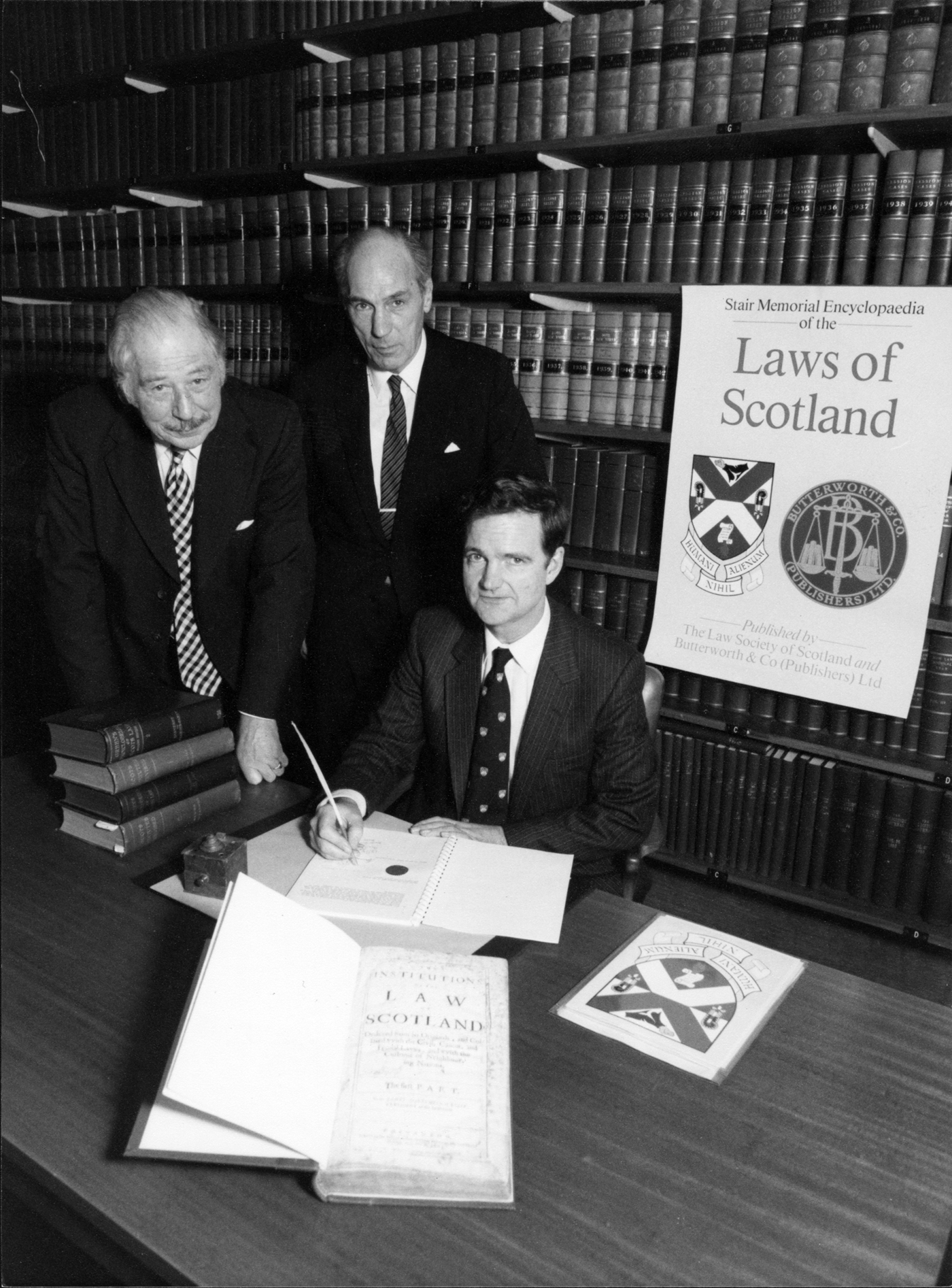
Figure 9: Stair Memorial Encyclopaedia.
LEXISNEXIS
By 1983, LEXIS-NEXIS acquired the New York Times Information Service and its INFOBANK library for the NEXIS service and in 1988 the owner of LEXIS, the Mead Corporation, acquired The Michie Company, which was founded in 1897 as the legal publisher of US state codes and statutes. By 1989, the millionth LexisNexis user ID was issued and in 1990 for the first time 100,000 online searches were conducted in one day in February.
In 1992 Reed Elsevier Plc was created with the merger of Reed International and the Dutch publisher Elsevier. The company went on the acquisition trail and when The Mead Corporation decided to focus on its core business in 1994, Mead Data Central was acquired by Reed Elsevier for £1 billion and became known as LexisNexis. By 1996 Reed Elsevier acquired Tolley which was duly integrated into the LexisNexis UK business.
In the same year, more than fifty titles were published under a contract with The Law Society of Scotland to publish the Stair Memorial Encyclopaedia in 25 volumes which started a considerable textbook publishing programme for Scotland.
In 1997, LexisNexis launched its first online research database on the web and overnight increased the amount of information on the internet by 50%. A year later LexisNexis processed more than 600,000 searches in a single day. By 2000, LexisNexis products push the combined online search systems to a record 1.7million searches completed in one day and, in 2001, the LexisNexis CD-ROM platform, which made the CD-based research process easier, was launched.

Figure 10: The ‘Rule of Law’ equation.
This success meant that the company was now on the acquisition trail and spent much of the noughties acquiring companies to create an unrivalled legal technology ecosystem. In 2015 Reed Elsevier became the RELX Group and later that year LexisNexis acquired Lex Machina. It then purchased market insight company MLEX and established family law publisher Jordans (founded in 1863 by Richard Jordan) in 2016.
Over the last 200 years, LexisNexis (in its various forms) has published laws in the UK and around the world; documented countless cases; produced leading texts and content to guide professionals and academics in their work; released decision tools; trained judges; and supported the development of our legal infrastructure.
LEXISNEXIS AND THE RULE OF LAW
The company has always followed its central objective, which sits at the very core of its strategy: to advance the rule of law around the world. This is vital for the well-being of citizens, businesses and society as a whole and LexisNexis is committed to playing a positive role in its communities, through advocacy, partnerships and the provision of high quality information.
LexisNexis is now overlaying its history of building content with the best legal technology available to support the rule of law. The company is now looking at all options to automate workflow for lawyers with the aim to improve efficiency and quality so that lawyers have more time to do the real job of law. As the company celebrates its bicentenary, it looks forward to the next 200 years of the future of law.
About LexisNexis
LexisNexis Legal & Professional is a leading global provider of legal, regulatory and business information and analytics that help customers increase productivity, improve decision-making and outcomes, and advance the rule of law around the world.
As a digital pioneer, the company was the first to bring legal and business information online with its Lexis® and Nexis® services. LexisNexis Legal & Professional, which serves customers in more than 130 countries with 10,000 employees worldwide, is part of RELX Group, a global provider of information and analytics for professional and business customers across industries.



